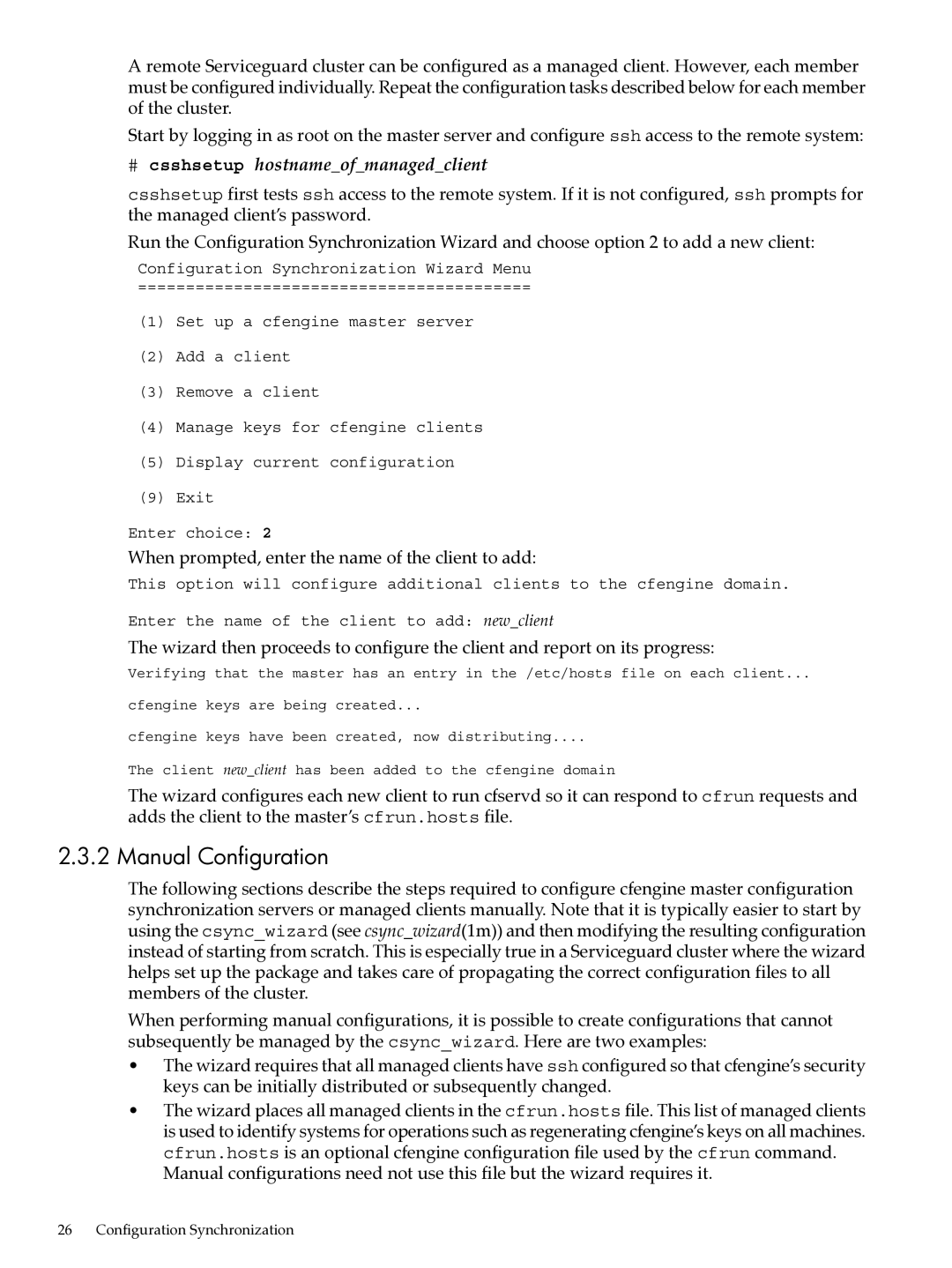A remote Serviceguard cluster can be configured as a managed client. However, each member must be configured individually. Repeat the configuration tasks described below for each member of the cluster.
Start by logging in as root on the master server and configure ssh access to the remote system:
#csshsetup hostname_of_managed_client
csshsetup first tests ssh access to the remote system. If it is not configured, ssh prompts for the managed client’s password.
Run the Configuration Synchronization Wizard and choose option 2 to add a new client:
Configuration Synchronization Wizard Menu
=========================================
(1)Set up a cfengine master server
(2)Add a client
(3)Remove a client
(4)Manage keys for cfengine clients
(5)Display current configuration
(9)Exit
Enter choice: 2
When prompted, enter the name of the client to add:
This option will configure additional clients to the cfengine domain.
Enter the name of the client to add: new_client
The wizard then proceeds to configure the client and report on its progress:
Verifying that the master has an entry in the /etc/hosts file on each client...
cfengine keys are being created...
cfengine keys have been created, now distributing....
The client new_client has been added to the cfengine domain
The wizard configures each new client to run cfservd so it can respond to cfrun requests and adds the client to the master’s cfrun.hosts file.
2.3.2 Manual Configuration
The following sections describe the steps required to configure cfengine master configuration synchronization servers or managed clients manually. Note that it is typically easier to start by using the csync_wizard (see csync_wizard(1m)) and then modifying the resulting configuration instead of starting from scratch. This is especially true in a Serviceguard cluster where the wizard helps set up the package and takes care of propagating the correct configuration files to all members of the cluster.
When performing manual configurations, it is possible to create configurations that cannot subsequently be managed by the csync_wizard. Here are two examples:
•The wizard requires that all managed clients have ssh configured so that cfengine’s security keys can be initially distributed or subsequently changed.
•The wizard places all managed clients in the cfrun.hosts file. This list of managed clients is used to identify systems for operations such as regenerating cfengine’s keys on all machines. cfrun.hosts is an optional cfengine configuration file used by the cfrun command.
Manual configurations need not use this file but the wizard requires it.
